Discover the Power of
Healing Foods! Newsletter
Issue #008
Wed 17 July 2013
Harness the Power of Anthocyanins -
Your Purple Defense
Welcome to the 8th issue of Discover The Power of Healing Foods! newsletter.
We've been led to believe that the real benefit of fruits and vegetables is in their vitamin C and E
content, but that's not really accurate. Most of the antioxidant power in these and other whole foods comes
from carotenoids and flavonoids.
In our previous issues we
discussed several carotenoid antioxidants and where we can find them. Then we discussed flavonoids in
general and quercetin in particular. If you've missed those issues catch up
here.
In this issue we'll discuss:
- What Are Anthocyanins?
What Are Anthocyanins?
Although most people have heard about vitamin C and E and even know something about carotenoids, not many
have heard about anthocyanins, let alone being able to pronounce the word. I certainly find it difficult to
get my tongue round that one!
Anthocyanins and their precursors, proanthocyanidins belong to the
flavonoids family. They are also known with several other names such as anthocyanidins, PCOs
(proanthocyanidins oligomers) as well as OPCs (oligomeric proanthocyanidins), procyanidolic oligomers,
anthocynosides, and quite a few more, but I won't bore you with the full list. I wish they had just one
name, it would make life so much easier ;).
You might have read about them under one name or another not knowing that they were talking about the same
or similar compounds.
They are the blue and purple pigments found in grapes, blueberries
and blackberries, as well as cherries. They can also be extracted from pine bark (Pycnogenol) and the seeds
of wine grapes.
Can't think of many purple foods? Here's a few:

How Can Anthocyanins Benefit You?
- Reduce the risk of macular degeneration by protecting the eye from free radical damage (so they work well with lutein and zeaxanthin).
- Work along with the antioxidant glutathione to recycle and restore oxidized vitamin C levels within our cells, thus increasing the vitamin's effectiveness.
- Prevent free-radical damage with their potent antioxidant and free-radical scavanging action. Free radical damage has been linked to the aging process and virtually every chronic degenerative disease, including heart disease, arthritis and cancer. The antioxidant activity of anthocyanidins is 50 times greater than that of vitamin E and 20 times more potent than vitamin C.
- Because they are able to cross the blood-brain barrier, anthocyanidins protect the brain and spinal nerves against free radical damage.
- Help prevent destruction of collagen and stabilize its structures (collagen is an important protein for healthy skin and connective tissue).
- Widely used to treat arthritic conditions, because of their ability to quench free radicals and stop breakdown of lubricating fluid inside inflamed joints.
- Improve circulation and decrease the leakiness and breakage of small blood vessels.
- Protect against heart disease and stroke by inhibiting the production of clot-promoting prostaglandins, preventing damage to cholesterol and the lining of the arteries. They've been found to reduce the atheroma or plaque inside the blood vessel walls, increase the strength of the heart muscle while decreasing the risk of arrhythmias and lowering blood pressure.
- Tone and strengthen the walls of hemorrhoidal veins, which can reduce pain and swelling, making them less likely to stretch under pressure and lead to hemorrhoids. Anthocyanidins in the form of grape seed extracts are widely used in the treatment of varicose veins and other venous disorders.
- Help the body to dispose of potential carcinogens and they block the formation of cancer-causing
chemicals, such as nitrosamines. Studies have shown grape seed extract to not only enhance the development
of normal cells, but also inhibit abnormal cell growth.
With all these benefits it's not surprising to know that extracts derived from plants have been made
in an effort to capture all these benefits. The primary use of PCO extracts is the treatment of venous and
capillary disorders, including venous insufficiency, varicose veins, capillary fragility and disorders of
the retina such as diabetic retinopathy and macular degeneration.
But it appears that most
individuals can benefit from an increased intake of PCOs, not just those with health problems. In one study
of 100 people with no visual problems, the group receiving PCOs demonstrated significant improvement in
visual performance in dark and after-glare tests compared to the placebo group.
Hawthorn
and yarrow plants, both exceptionally rich in procyanidins, have long been used to treat angina and
circulatory problems. And they work quite fast: Hawthorn is reported to alleviate the pains of angina within
a month
of two of treatment by 'defurring' the arteries.
How to Benefit from Anthocyanins
You can get the benefits of anthocyanins from eating whole berries but they're more concentrated in berry
juice. And the best berry juice turns out to be red wine!
For years, researchers wondered how the
French could drink red wine at lunch and dinner, pack away enough butter and lard to fill a Parisian pastry
shop and smoke just as much or more than people in other countries, yet have heart disease rates 2 1/2 times
lower than ours.
The mystery was solved when flavonoids were discovered and studied. While the
French may take delight in puffed pastries and cigarettes, they also eat a lot of fruits and vegetables,
which, along with the red wine they enjoy, are packed with these important compounds.
I can
testify to the fact that Italians too enjoy their red wine and one Italian study examining more than 700
people with a history of heart attack over 8 years found that those with the highest intake of
anthocyanidins had the lowest rate of heart attacks.
How do flavonoids protect from heart attacks? Studies show that they lead to a decrease in
atherosclerosis, or hardening of the arteries, making them more flexible and able to deal with the stresses
of high-fat foods and exercise.
Grape juice also contains flavonoids and may offer some
protection, but it doesn't seem to be as effective as red wine. Among the fruit juices, however, purple
grape juice from Concord grapes has the highest content of flavonoids.
White wine, on the
other hand, has a much lower flavonoid content than red wine and doesn't seem to have the same beneficial
effect.
Food Sources of Anthocyanins
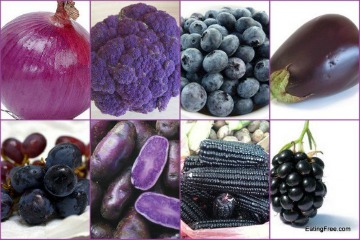
- beets
- bilberries
- blackberries
- blueberries
- broccoli (purple)
- cherries
- citrus fruits
- Concord grapes
- corn (purple)
- cranberries
- currants
- eggplant or aubergine
- figs
- green tea
- onions (red)
- persimmons
- plums
- pomegranates
- prunes
- radishes
- raisins
- raspberries
- red cabbage
- strawberries
Other types of flavonoids might be a bit tricky to get enough of in your diet, not because they're scarce
but because they often hide in out-of-the-way places, such as the white stuff beneath an orange rind, for
example, or inside an apple's peel.
The beauty of anthocyanidins is that they're easier to get
to. They are plentiful in red wine and usually you don't peel berries or cherries, although, unfortunately,
we do discard the seeds of the grapes which contain the highest amount of anthocyanidins.
Be
careful, though; If you think that more is better, well that doesn't apply to wine. Studies show that
whereas 1 or 2 glasses of red wine a day have been found beneficial, a higher intake has been linked to
several health problems, so you don't want to over-drink.
Grape Seed Extract vs. Pine Bark Extract
Extracts of grape seeds and pine bark (Pycnogenol) are popular supplements that provide anthocyanidins and
PCOs. With regard to the free-radical scavenging activities of PCOs, studies demonstrate that grape seed
extract may be more potent and effective than the extract of pine bark.
Only grape seed extract
contain particular compounds (proanthocyanidin B2-3'-0-gallate, if you must know) that are not present in
pine bark and are the most active free-radical scavenging PCOs. In addition, it's far more economical to
extract PCOs from grape seeds than from pine bark. As a result, the grape seed extract provides greater
value at a lower price!
But clinical trials have been carried out using Pycnogenol, a patented,
proprietary formulation derived from the bark of French maritime pine trees and have found it very effective
in fighting heart disease and stroke, minimizing symptoms of asthma and inflammation and protecting the
brain from free radicals damage.
Studies carried out using grape seed extract have also found it
very effective in preventing heart disease, fighting cancer by preventing angiogenesis (the process of new
blood vessels development that allows tumors to grow), in circulatory problems and in the prevention of
cataracts.
So it's not surprising that experts are divided on deciding which one is best.
Probably, a supplement containing either one would be good, or, even better, containing both.
As
a preventive measure and as antioxidant support, a daily dose of 50 mg. of either grape seed or pine bark
extract should be used. When being used for therapeutic purposes, the daily dosage should be increased to
150 to 300 mg. No side effects have been reported for PCO extracts.
An even better strategy is to
include a variety of antioxidant supplements in your diet. They are team players and work much better
together than in isolation.
So what should you look for in a good antioxidant supplement?
Apart from vitamin C and E, it should contain anthocyanidins (i.e. grapeseed or pine bark extracts as well as bilberry extract), beta carotene, quercetin, lutein and zeaxanthin, and lycopene, so check the labels.
I found these supplements particularly good:
Replete 2 from Cytoplan
Oxycell from
Nutrigold
And especially...
... don't
forget to include lots of fruit an vegetables with a high flavonoid
content in your diet, i.e. prunes, dark cherries, blueberries, raisins,
currants (and as many of the ones listed above as you can), and drink
one or two glasses of red wine or purple grape fruit juice a day, and
you might even be able to enjoy the occasional stray into the realm of
fatty food!
Coming Next...
I hope you have enjoyed reading this newsletter. So far we've discussed how flavonoids can protect you from
disease and particularly how anthocyanidins can have a huge impact on your health. Next time, I'll discuss
another important group of flavonoids, citrus flavonoids.
Look out for the next
newsletter, you don't want to miss it!
Also, if this newsletter has raised some questions in your
mind about antioxidants or you'd like specific information on them, don't hesitate to get in touch with
me.
The next issue will be sent out on Wed 14th Aug 2013.
Until Next
Time,
Aurora Raisbeck
P.S.
If you liked this newsletter, please do a friend and me a
big favour and "pay it forward". If a friend did forward this to you and
you like what you read, please subscribe by visiting Discover the Power
of Healing Foods!
Comments? Ideas? Feedback? I'd love to hear from you. Just use the
Contact Me form and let me know what you think.
Or fill in the form below to help me improve it.
Search for information on this site:
Receive Discover the Power of Healing Foods! Free
Newsletter
The Antioxidants Series:
Issue #3 - Free Radicals and Antioxidants - The Never Ending War
Issue #4 - Beta Carotene - A Powerful Ally in our Fight Against Free Radicals
Issue #5 - Lutein and Zeaxanthin - The Eye Protectors
Issue #6 - Discover the Benefits of Lycopene - Your Best Defence Against Cancer
Issue #7 - What are Flavonoids and
How Can We
Benefit from Them?
Issue #8 - Harness the Power of Anthocyanins -
Your Purple Defence
Issue #9 - Hesperidin and Other
Citrus Flavonoids - Your Cancer Fighters
Health Benefits of Blueberries -
Are They Exaggerated?
Most Popular
Pages:
The Best "Fish Oil" Supplement is Not Made from Fish
Bananas for High Blood
Pressure

Elimination Diet for IBS and Other Food
Sensitivities
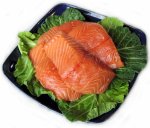
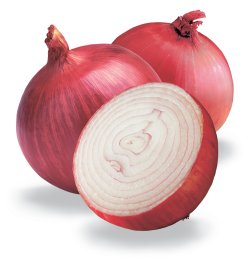
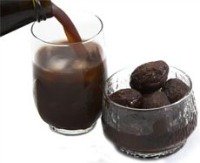

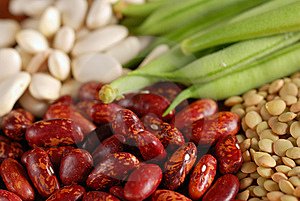


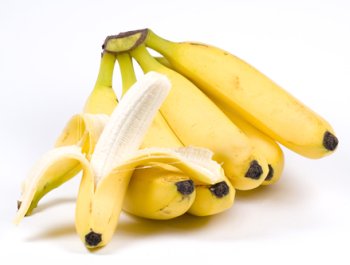
New! Comments
Have your say about what you just read! Leave me a comment in the box below.